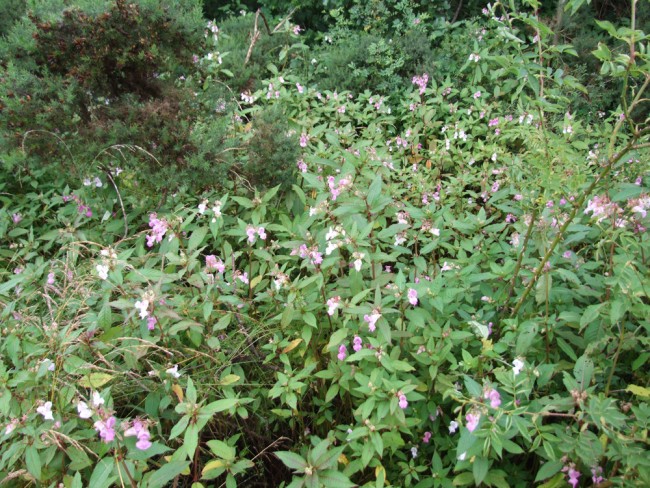It seemed inevitable that the dreaded Himalayan balsam that pollutes every other Ayrshire river would appear in the Ayr catchment and it has. Last year we reported finding balsam on the Coyle at Broomhill fishery where it seemed to have come in with top soil. That was addressed by the owners quickly after we alerted them to it although I know a few plants escaped and more have appeared this season. The Coyle enters the main river Ayr near Annbank so downstream of the confluence may be affected this year although as yet we haven’t come across any plants.

Himalayan balsam. Nowhere on the Lugar have we seen it as dense as in this image yet but if left uncontrolled, this is the future for the entire river downstream within just a few years.
Last week whilst electrofishing the Lugar at Langholm near Ochiltree, we found a small clump of balsam growing there too. Where this came from is unknown but it is there now and needs urgent attention. We have alerted Auchinleck Angling Association who control this water.
Today we were in Dumfries Estate looking for a gravel cleaning set and found about 20 plants at the top of the left bank upstream of the Adams Bridge several hundred metres. Seed appears to have been deposited there in a very high spate last year. That indicates that there is a source further upstream that has been recently introduced. At present, it’s a very low density infestation and that makes it hard in itself to find and control but it if it’s allowed to seed this year and next year then I feel the entire river will become infested and quickly beyond any hope of control.
Anyone seeing this plant should uproot it. As seed pods are currently forming, either bag the seed heads carefully without allowing them to explode and then uproot the rest of the plant or else, uproot them carefully and place the seed heads as close to the ground as possible to confine seeds to a very small area for treatment next year. If you take seeds away in a bag, seal it and leave them to rot overwinter or burn them. Don’t throw the bag in the wheely bin!
Unfortunately as we are fully committed this year and understaffed, the Trust cannot put men onto addressing this issue at the moment, much as we would like to. It now has to fall to anglers and owners to take the lead. I expect Dumfries House may be able to assist and I will ask the question but downstream, getting landowners involved may be difficult, if not impossible although they are legally responsible to stop this plant spreading from their land.

